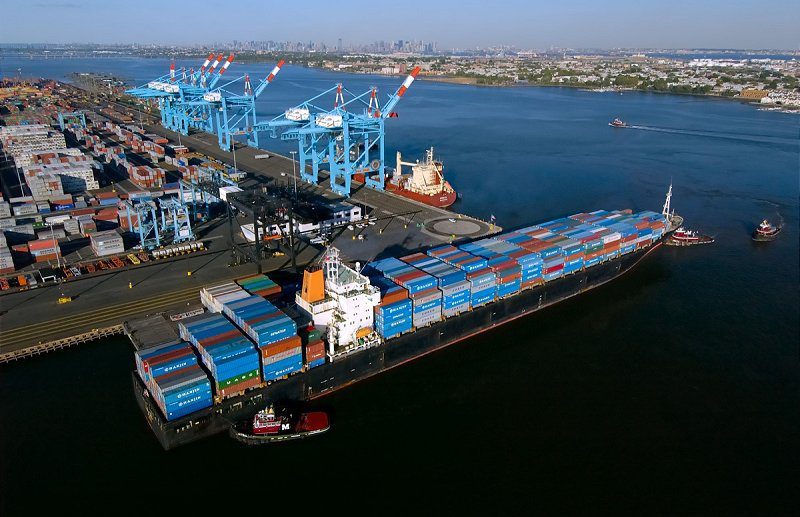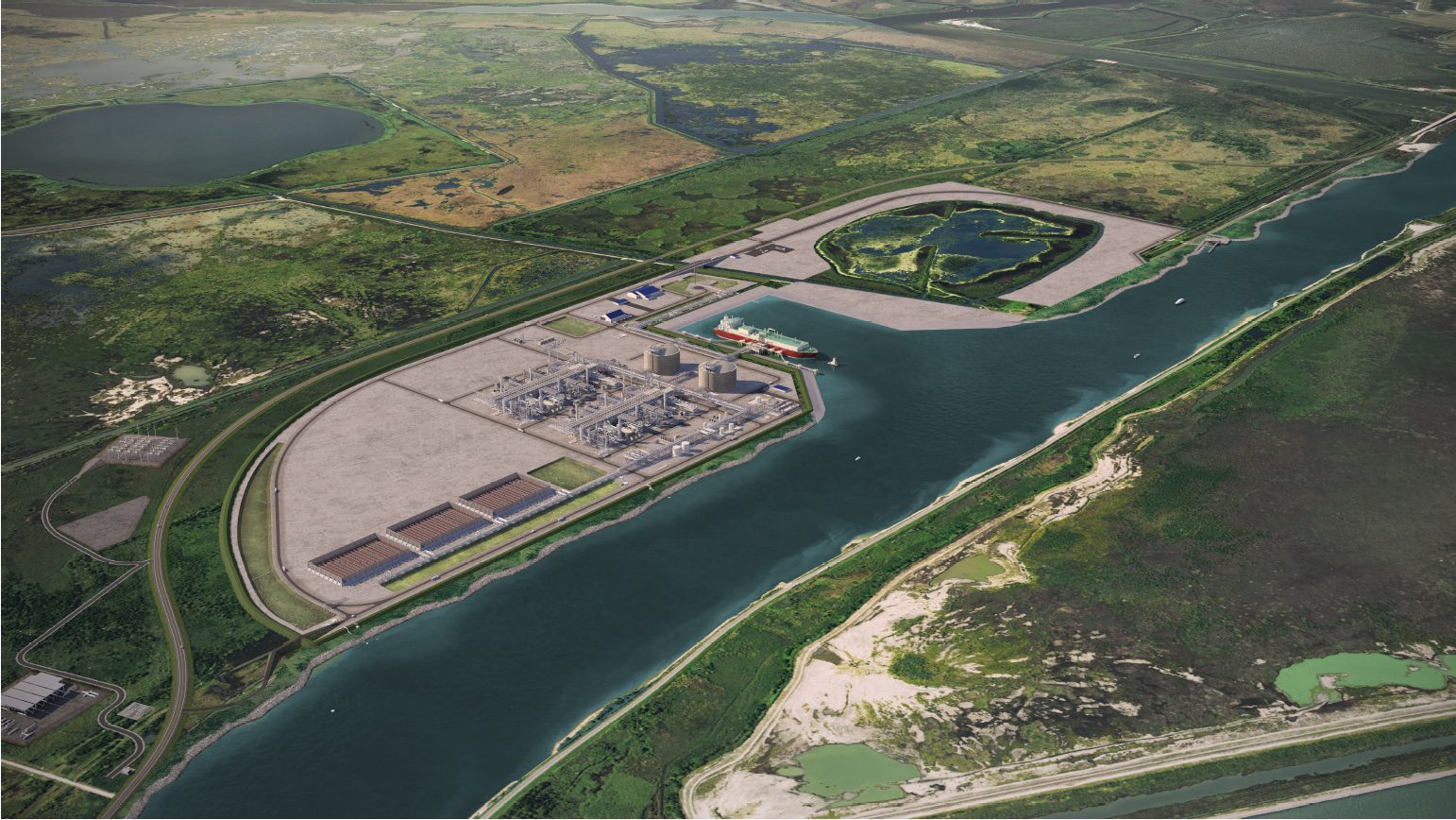A Hanjin vessel berths at APM Terminals, Port Elizabeth, New Jersey, image courtesy APM Terminals
– by Bruce Vail
As anxiety over the possibility of a major U.S. dock strike rises, shipping unions here and abroad are responding with a show of solidarity that could help the International Longshoremen’s Association (ILA) win its current war of nerves with waterfront employers.
Meeting in Washington, D.C., last week, leaders of several unions announced the formation of a new “Maritime Labor Alliance” to coordinate the activities of waterfront unions in the United States, and to broaden that cooperation in the international sphere.
The alliance brings under one roof the ILA, the International Longshore and Warehouse Union (ILWU), several smaller shipboard unions, and the global International Transport Workers’ Federation (ITF). Although the formation of the umbrella group comes just two weeks ahead of an ILA strike deadline, the alliance has been conceived as an ongoing effort that will continue well beyond the resolution of the current ILA fight, labor sources say.
“The idea for the Alliance was floated a couple of months back by the ILA president when he spoke at the ILWU convention in San Diego. The idea is to show more unity than is normally the case. We all want to stand behind the ILA right now, but we also want the unity to last,” says ILWU Communications Director Craig Merrilees
Long-term plans aside, all eyes are now on the Oct. 1 deadline of the ILA, which is negotiating a new contract with waterfront employers in East and Gulf Coast ports. Contract talks have been stalled, but are scheduled to resume this week with the assistance of Federal Mediation and Conciliation Service (FMCS), a government agency created for the purpose of easing tense labor relations and avoiding strikes.
The involvement of FMCS reflects a rising anxiety that a strike is imminent, with potential costs immense. A number of influential retail trade associations have raised the alarm that a shipping strike now might clog the annual flow of winter holiday goods, undermining the holiday sales that many retailers count on for year-to-year profits.
Indeed, some businesses are already squealing about increased costs. In a Sept. 17 statement, the Toy Industry Association called on the ILA and employer group United States Maritime Alliance (USMX) to settle a new contract now to avoid further shipping disruptions.
“Simply the threat of a strike has already caused shipping to slow due to equipment and space shortages, and costs are on the rise as manufacturers scramble to invest in development of alternative transport modes,” the toy group complained. Container shipping lines have announced “dramatic” increases in strike surcharges that could amount to as much as $1,000 for each standard 40-foot container, the Toy Association warned.
It is precisely this kind of pressure that provides leverage for ILA President Harold Daggett in his negotiations with USMX. Daggett, installed only last year as leader of the union, has not shied away from militant language and appears keenly aware that the ILA is dealing from strength in the current negotiations.
Daggett’s hand is further strengthened by the formation of Maritime Labor Alliance. A press release from the group stated that at its inaugural meeting, the “first order of business” was to review the ILA negotiations and pledge “mutual support.”
Any support from the other maritime unions will be indirect, as federal law and existing collective bargaining agreements preclude sympathy strikes by the ILWU or other Alliance members.
But indirect support can be meaningful. For example, labor contracts signed by Alliance members Marine Engineers’ Beneficial Association (MEBA), and International Organization of Masters, Mates & Pilots (MM&P) typically include provisions that allow its members to honor any legally constituted picket line, including an ILA strike line. The ILWU, for its part, has been known in the past to allow expensive slow-downs of waterfront work when labor-management tensions are high. Though not technically in compliance with the ILWU contract, such slowdowns can be effective it re-starting stalled negotiations.
Despite the MLA’s initial focus on the strike, Claus Luhta, Director of Government Relations for MM&P, says the timing of the formation is “coincidental.”
“This is something that is needed because shipping is an international industry, and we need a unified, international approach,” Luhta says.
Similarly, ITF President Paddy Crumlin (who also serves as National Secretary of the Maritime Union of Australia) characterized the formation of Maritime Labor Alliance primarily as a response to a global problem of automation in waterfront cargo handling.
Advances in technology have eliminated countless waterfront jobs around the world, and organized labor needs a stronger and more coherent response, Crumlin says, explaining, “How automation is introduced has been established as an issue for all international dock workers, their employers and their shareholders and customers.”
Crumlin’s statement is right on message for the ILA’s Daggett, who has insisted that the problem with the current contract negotiation is not with wages and benefits, but job security for ILA members. Although he has never publicly spelled out the union’s contract demands, Daggett has made numerous public statements declaring that job security is the key issue and that employers must address the issue as part of a contract settlement.
Bruce Vail is a Baltimore-based freelance writer with decades of experience covering labor and business stories for newspapers, magazines and new media. He was a reporter for Bloomberg BNA’s Daily Labor Report, covering collective bargaining issues in a wide range of industries, and a maritime industry reporter and editor for the Journal of Commerce, serving both in the newspaper’s New York City headquarters and in the Washington, D.C. bureau.
Article republished with permission via InTheseTimes

 Join The Club
Join The Club











